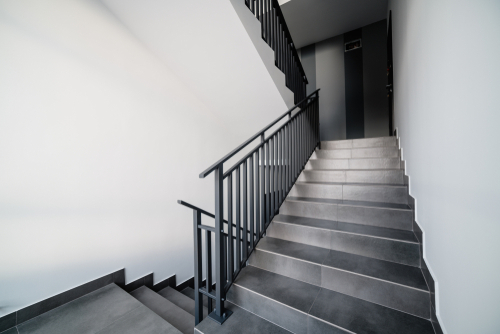Your apartment building might be the last place you would ever expect to get hurt. However, not every landlord ensures that their properties are safe and free from hazards. Unfortunately, some landlords allow interior and exterior conditions of their buildings to fall into disrepair, leading to the potential for trip and fall accidents. Although a landlord may not necessarily be responsible for every fall that occurs on their premises, they may be held accountable if they were negligent or careless.
Causes of Trip and Fall Accidents in NYC Apartment Buildings
New York City landlords have a duty to ensure that they maintain the common areas of their properties in a reasonably safe condition. This includes lobbies, stairwells, elevators, laundry or gym facilities, pool areas, parking lots, walkways on the property, hallways, and any other areas tenants and guests may occupy.
Some common reasons for apartment building trip and falls include:
- Inadequate lighting
- Debris
- Warped floorboards
- Improperly maintained floor mats
- Ripped carpeting
- Broken tiles
- Inadequate maintenance
- Misleveled elevators
- Building code violations
Generally, a landlord won’t be held liable for injuries sustained inside your unit, except in limited circumstances. For instance, if the landlord was notified of a condition they were responsible to repair — such as a floor defect — and failed to do so, you may be able to file a lawsuit to recover your damages if you get hurt as a result.
Establishing Liability Against Your Landlord in a Premises Liability Lawsuit
To prevail in a premises liability lawsuit, a trip and fall victim needs to establish that the responsible party either created the hazard that caused their injuries or that they had actual or constructive notice of it.
In other words, if a landlord knew — or should have known — about a condition in their building that could cause a trip and fall, and failed to timely repair it, they may be held liable for any injuries that arise. A landlord may also have been negligent if they knew about a dangerous condition and failed to block off the area or place a warning sign.
Other parties who may be responsible for trip and fall injuries due to a dangerous apartment building condition can include a building owner, property manager, maintenance company, construction company, or another tenant. If the trip and fall occurred due to a building or design defect, an architect or engineer might also be accountable.
Common types of evidence to establish liability can include photos of the dangerous condition, eyewitness accounts, correspondence or complaints regarding the condition, repair logs, and footage from surveillance cameras. An attorney may also conduct depositions to obtain testimony from the landlord, maintenance staff, or any other party or non-party in the case to prove liability.
Compensation for Apartment Building Trip and Fall Injuries
Often, trip and falls can result in serious injuries such as concussion, broken bones, fractures, lacerations, nerve damage, and paralysis. A trip and fall victim may require extensive medical treatment, be unable to work, and sustain a permanent disability. While you may be entitled to recover for your economic and non-economic damages in a trip and fall lawsuit, your injuries must be properly documented to recover any compensation.
Medical records are crucial evidence in every premises liability case. Even if you can demonstrate that a landlord failed to keep the conditions in or around the apartment building reasonably safe, you don’t have a valid claim if you cannot prove that you suffered an injury.
Critically, any documentation related to hospital treatment, physical therapy, diagnostic testing, or other medical care will be vital in proving the extent of your injuries — and the amount of compensation to which you may be entitled to receive for them.
Recoverable economic damages you might be awarded in a trip and fall case can include unreimbursed medical expenses, lost wages, future lost earnings, and out-of-pocket expenses related to medical treatment. In addition, you may also be entitled to non-economic damages for pain and suffering and loss of enjoyment of life.
Contact an Experienced New York Trip and Fall Attorney
If you have been injured in an apartment building trip and fall accident, it’s essential to contact a personal injury attorney immediately. The experienced personal injury attorneys at The Dearie Law Firm, P.C. can ensure your legal rights are protected and you recover the maximum compensation you deserve for your injuries.
The Dearie Law Firm, P.C. has convenient office locations in Manhattan, Brooklyn, and the Bronx, as well as mobile locations serving Brooklyn, Queens, Manhattan, the Bronx, Staten Island, Westchester, Rockland County, Nassau County, and Suffolk County. Contact us for a consultation.

